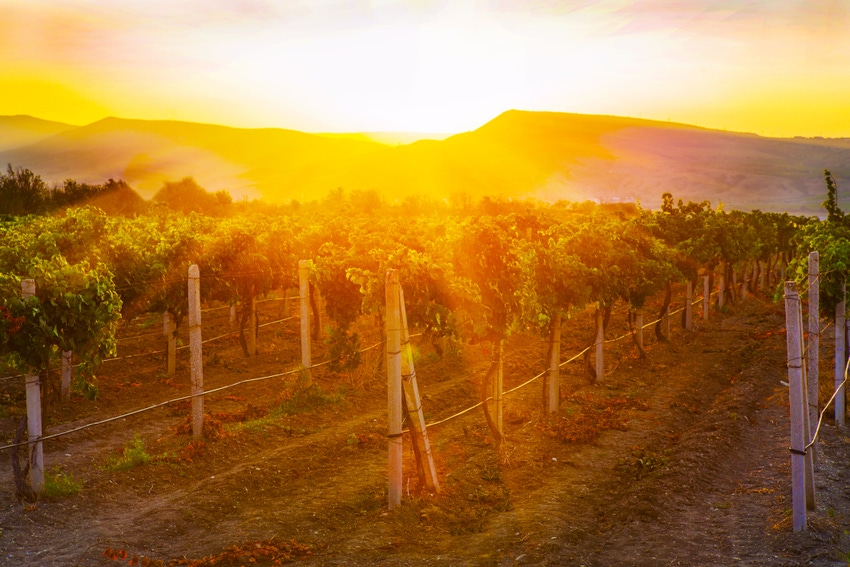
As the San Joaquin Valley grapples with perpetual water shortages, vintners are pondering the ramifications of deficit irrigation.
Generally, vines receiving no supplemental water or that are deficit-irrigated will show less vegetative growth, smaller berries and lower yields than vines that receive normal watering, advises Larry Williams, a viticulture and enology researcher at the University of California’s Kearney Agricultural Research and Extension Center in Parlier.
However, moderate vine water stress has been associated with increased fruit quality, especially for red wine grape cultivars, Williams notes in a recently released paper.
The trick is to figure out when to start irrigating. A grower can measure the depletion of water in the soil or use plant-based methods such as measuring midday leaf water potential to determine when to start watering, he says.
Once that decision has been made, there are several ways to deficit-irrigate vineyards, he notes. Sustained deficit irrigation (SDI) is the practice of purposely withholding some water beginning with the season’s first irrigation and continuing throughout the growing season, he explains.
In contrast, regulated deficit irrigation (RDI) only withholds water during specific times of the season for conservation while minimizing impacts on yield or crop revenue, Williams writes.
“The timing of RDI in vineyards is usually associated with phenological events of the vine such as between berry set and veraison (berry softening and color change) or veraison and harvest,” he writes. “Both SDI and RDI are based upon knowing what full evapotranspiration (ET) for the vineyard is and then irrigating at some fraction of that amount once irrigation commences.”
Partial rootzone drying
Still another technique used to deficit-irrigate vineyards is called partial rootzone drying (PDR). In this instance, vines are watered on one side of the vine’s trunk, receiving half its normal water during a two-week period, and then irrigated during the next two weeks on the other side of the vine, he says.
Normally, two drip lines are placed down a row with emitters on opposite sides of the vine’s trunk, But Williams says he and other scientists have found the effect of PRD on vine growth and productivity was no different than simply irrigating with half of normal amounts using SDI.
Of course, deficit irrigation isn’t for every vineyard – especially in arid and semi-arid regions like the San Joaquin Valley where water stored in the soil profile is insufficient to meet a vineyards water needs, Williams notes.
For instance, seasonal water use of Thompson Seedless grapevines average 33.2 inches per growing season, making supplemental irrigation necessary if a grower is to produce a harvestable, high-quality crop even during wet years, he writes.
For Williams’ full paper on deficit irrigation of vineyards, visit https://bit.ly/2HxMorJ.
For more news on pests, disease management and other issues affecting vineyards, subscribe to the bi-monthly newsletter The Grape Line.
About the Author(s)
You May Also Like






